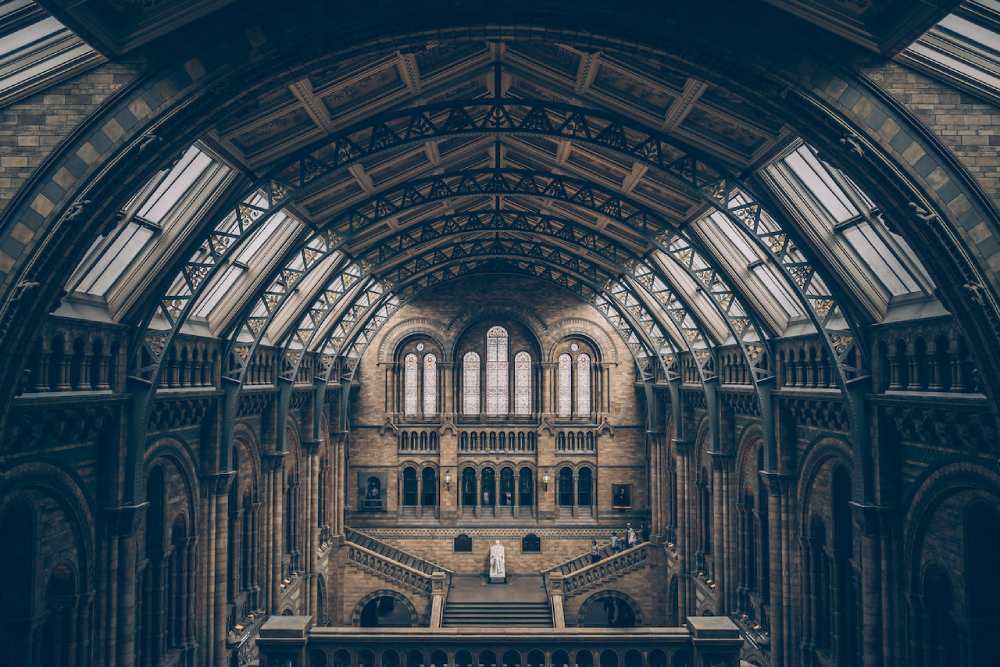What is it and how is it defined?
Aesthetics encompasses the level of appeal that a material or ensemble has in relation to its distribution, arrangement, or spatial organization. A more precise definition establishes aesthetics as a branch of philosophy that focuses on the analysis and study of beauty and the perception of the artistic. It addresses issues related to taste, appreciation, and the evaluation of forms, colors, sounds, and other sensory expressions present in both works of art and nature.
Although aesthetics and beauty are closely related, they are not strict synonyms. Beauty is a subjective aspect of aesthetics, and aesthetics represents a discipline that investigates and analyzes the phenomenon of beauty along with other aspects related to the artistic and sensory experience. Commonly, when we perceive something as aesthetic, we associate it with beauty, which demonstrates a deep correlation between both concepts. However, both exist in the abstract and subjective realm, and an absolute notion of beauty or aesthetics cannot be reached for all individuals in general. Nevertheless, certain parameters can generate a sense of “beauty” or “aesthetics” in the majority of the public.
What is the purpose of aesthetics in engineering?
The duty of engineers lies in materializing concepts, ideas, or thoughts in the real world that, in their origin, belong to the realm of the unreal and the imaginative. Engineers work with ideas, turning them into realities through the use of physics and mathematics. For this reason, it is crucial that we know how to express these “ideas” in a visually appealing manner, thereby creating an illusion of “beauty” for those who observe them. But why is this so important? Primarily, we aim for our creations to be aesthetic to elicit a sense of pleasure in others. However, implicitly, this aesthetics is closely linked to a sense of safety and functionality. Below, we will explore the reasons behind this relationship.

Psycho-Social Effects of Aesthetics
In the vast universe, beauty, though a subjective concept, is abundantly present due to the laws of physics and the arrangements in the universe that tend to generate aesthetic harmony, from the crystalline structures of materials to the fractal patterns emerging in snowflakes, all displaying unparalleled aesthetics emanating from nature itself.
Living beings, implicitly, actively seek aesthetics, which elicits various internal sensations that are fundamental for our well-being and perception of the environment:
- Tranquility: Although we often do not consciously notice it, aesthetics influences our state of tranquility. Analyzing its opposite, we can understand this connection. A cluttered and dirty environment generates discomfort and stress, while an organized and clean one provides relaxation, comfort, and peace. Our minds seek tranquility through aesthetics, leading us to harmonize our spaces for greater emotional well-being. Aesthetics can evoke a sense of harmony when the elements of a design or environment are combined in a balanced and cohesive manner. Aesthetic harmony conveys a sense of order and coherence, contributing to a pleasant and satisfying experience.
- Safety: Aesthetics plays a fascinating role in the perception of safety. Imagine two identical electrical circuits: one shows all its connections, wires, and electrical components exposed, while the other is enclosed within a plastic casing, adopting a more elegant and discreet shape, like a cellphone. Despite having the same functionality, the first one generates feelings of insecurity due to the exposure of its elements and the possibility of electrical risks, while the second, thanks to its aesthetic appearance and concealed components, suggests greater safety. The same applies to structures: a building with a strange design, unfavorable spatial arrangements, and exposed bricks evokes insecurity and vulnerability, while an aesthetically pleasing construction conveys a sense of solidity and protection. Humans perceive safety through aesthetics.
- Inspiration: Aesthetics can act as a source of inspiration for people. When contemplating a work of art, a beautiful natural landscape, or an ingenious design, it is common to feel a creative spark that drives us to imagine new ideas or perspectives and motivates us to strive for excellence in our own projects and creations.
- Wonder: Aesthetics can also provoke a feeling of wonder and admiration. When encountering exceptional visual, artistic, or natural manifestations, we can feel amazed and awed by the apparent greatness and perfection, enriching our appreciation of the world around us.
Consequently, it is clear that aesthetics goes beyond the mere pursuit of superficial beauty in engineering works. Its implicit effects on society encompass our sense of tranquility and security, fundamental aspects of our emotional well-being and perception of the environment. Aesthetics, by interacting with our emotions and perceptions, becomes a significant influence that shapes our relationship with the world and enriches our life experience.
How do we make our works "Aesthetic"?
In the field of Civil Engineering and architecture, it is essential to consider the properties that can enhance the aesthetics of our works. Equally important is the proper handling of decorations and the careful management of spatial arrangement, without neglecting the priority of making constructions Functional and Safe. It should be clarified that the “sense of security” conferred by aesthetics should not be confused with the true “safety” that an engineer must ensure in their projects.
Some of the characteristics that contribute to making a work or structure aesthetic are as follows:
- Spatial Distribution: Intelligent management of spaces plays a vital role in achieving aesthetics in a work. Engineers and architects must carefully consider spaces and have a perfect understanding of the dimensions of non-structural elements that will be part of the construction. An excessively spacious spatial arrangement can generate an undesirable feeling of emptiness, while excessive clustering can lead to a perception of disorder and limited mobility.
- Symmetry: Symmetry, understood as the similarity of both sides of a whole when it is divided in half, is a property that has been used throughout history to achieve beauty in works. Symmetry not only contributes to aesthetics but has also been shown to make symmetric arrangements more stable and resistant in terms of structural capacities.
- Color Theory: One of the most important factors in achieving aesthetics in engineering works is the distribution of colors. The colors used in finishes must be carefully related and appropriate to the function of each room or the facade of the structure. The choice of vibrant and cheerful colors for a playroom in a kindergarten, or more subtle and relaxing shades for a cinema room, should be in line with the desired atmosphere and the functionality of each space.
- Lighting: Lighting is a highly relevant factor that is often underestimated. The arrangement, intensity, and color of lights can generate different sensations in the inhabitants of the structure. Direct lights provide a sense of clarity, while indirect lights create a more relaxing atmosphere conducive to rest. The choice of white or bluish lights can convey a cool feeling, while yellow lights and ocher colors can provide warmth.
- Finishes and Non-structural Elements: Finishes and decorative elements must be in close harmony. It is essential to define the desired style for each room or space to be decorated, whether it is modern, minimalist, vintage, or rustic. The types of finishes used and decorative elements, such as furniture, rugs, and wall decorations, must be in line with the desired sensations to be generated in the occupants.

Conclusion
It is a fundamental responsibility for both architects and engineers to thoroughly understand these properties. It should
be noted that the following considerations are just an introduction, as each of them can be significantly explored in the pursuit of aesthetics in constructions and decorations. Professionals in this field must have the ability to correlate finishes and decorative elements with lighting and color theory, aspects that should not be considered at the end of the process but should be addressed from the early stages of building design.
Therefore, it is of utmost importance that professionals fully understand the purpose of each structure and each room, as well as the style and preferences of the final client. This way, a balance is achieved, and the aesthetic needs that may arise are satisfied. By considering from the outset the spatial arrangement of both structural and non-structural elements, a coherent and harmonious conception is ensured, contributing to the creation of aesthetically pleasing and functional environments.
It is worth mentioning that aesthetics in architecture and engineering goes beyond merely seeking superficial beauty in constructions. The pursuit of aesthetics involves a holistic approach, considering multiple elements that converge to create a visually, emotionally, and functionally satisfying experience. The comprehensive education and knowledge of the professional, along with careful attention to every detail, are key to achieving successful aesthetic results in each project.
References
– Aesthetic Components of Architecture
Books:
- La estética de la arquitectura, by Mario Carpo.
- Estética y arquitectura, by Juhani Pallasmaa.
- La forma en la arquitectura, by Ernst Gombrich.
- La arquitectura como lenguaje, by Kenneth Frampton.
About The Author
Samuel Parariá
Estudio: University of Francisco de Paula Santander.
Major: Civil Engineering.
Favorite Areas: Structures, Traffic Engineering, and Road Design.
Location: Cúcuta, Norte de Santander, Colombia.







Related
Gravity Retaining Walls
What are Anchored Retaining Walls?
Methods for Paver Calculation – Civil Engineering